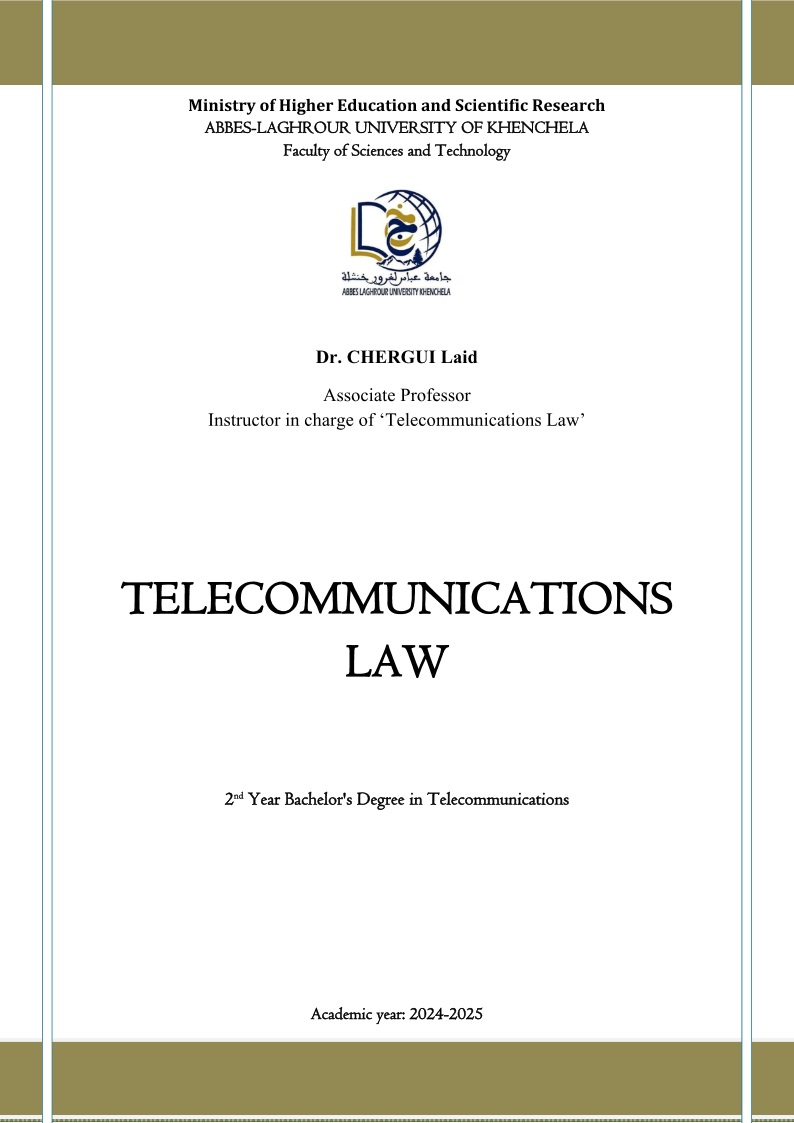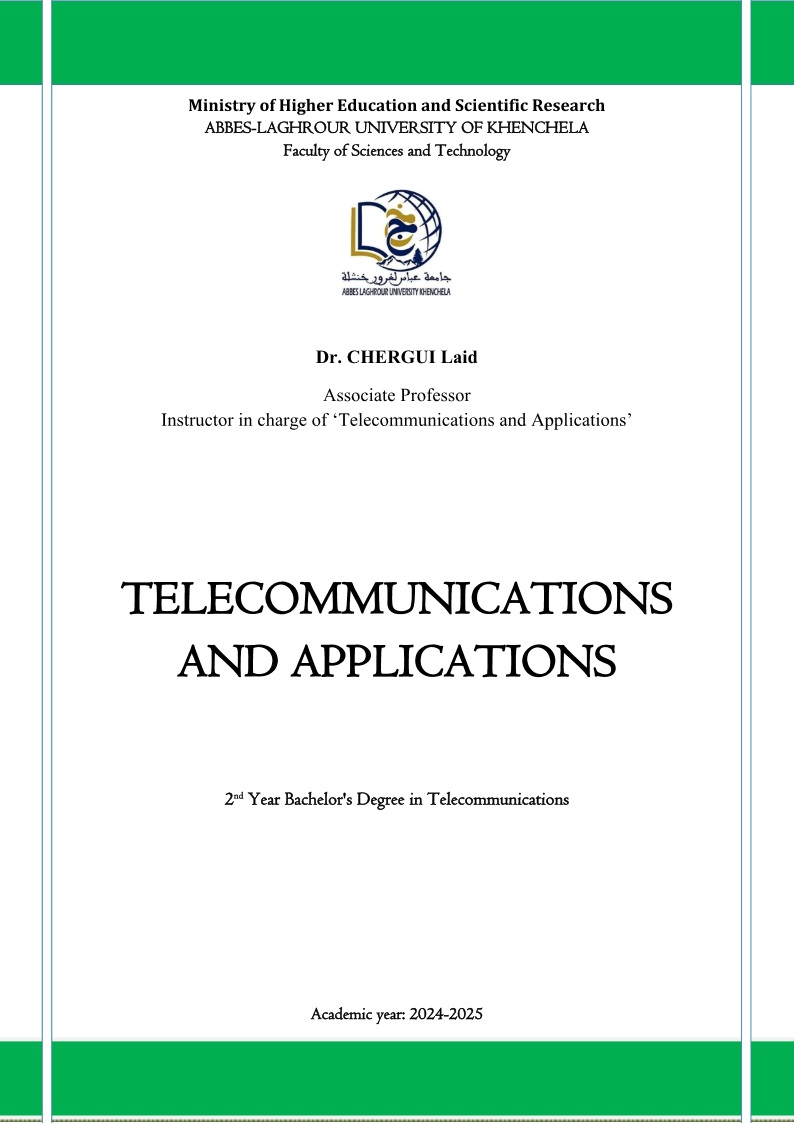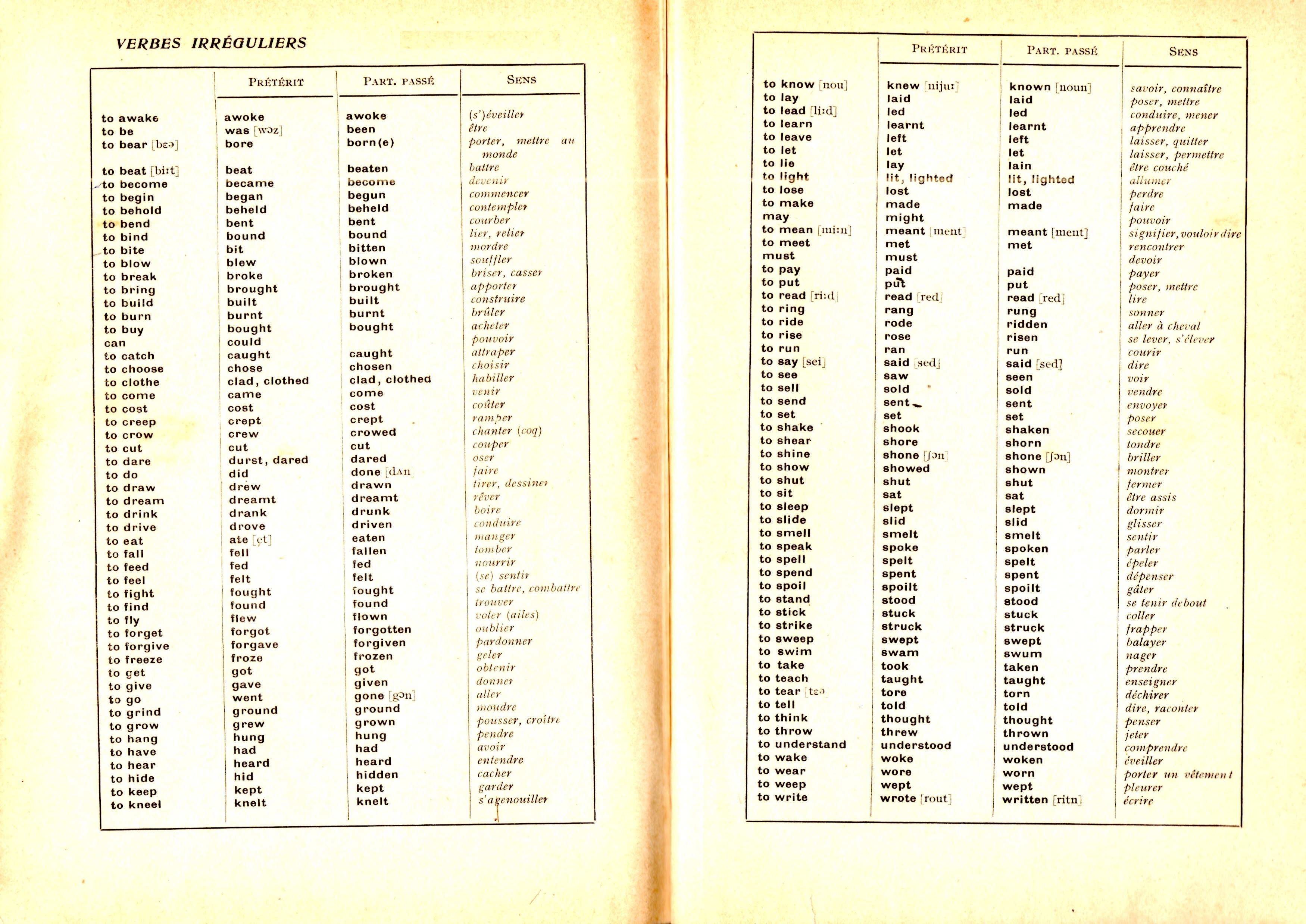
This teaching material comprehensively addresses the full scope of the
Telecommunications Law course, designed for second-year undergraduate students
specializing in telecommunications. Its content is fully aligned with the most recent
revisions of the national curriculum for the 2022–2023 academic year.
This manuscript provides a concise yet thorough examination of
telecommunications law in the context of rapid Information and Communication
Technologies (ICT) development. It analyzes the historical and societal impact of ICT,
the evolution of international and national legal frameworks, and the role of key
institutions and standards. By addressing challenges like technological change and
regulatory fragmentation, and offering Algeria as a contextual case study, it delivers
essential insights into how legal systems respond to the digital transformation.
The manuscript is organized into four chapters that progress from a global to a
national view of telecommunications law. It begins with the historical evolution of
ICT and its legal responses, followed by an overview of international
telecommunication organizations and their governance roles. The third chapter
analyzes key international regulations and standards, while the final chapter focuses on
Algeria’s legal framework and its alignment with global norms. The content is
supported by the references listed at the end.
- معلم: chergui laid

This instructional resource covers the entire curriculum of the Telecommunications and Applications course, intended for second-year undergraduate students in telecommunications. Its content aligns with the latest updates of the national program for the academic year 2022–2023.
This manuscript provides a clear and structured overview of telecommunications, covering fundamental concepts such as the electromagnetic spectrum, telephony, and data transmission technologies. It explains the architecture and operation of both wired and wireless networks, including mobile and satellite systems. The content also explores broadcasting, radar applications, and emerging technologies like 5G, IoT, and network virtualization. It serves as a foundational resource for understanding modern and future telecommunications systems.
The manuscript is organized into four chapters, each addressing a major aspect of telecommunications. Chapter I introduces the fundamentals of telecommunications,
including the electromagnetic spectrum, system classifications, market trends, and
emerging technologies like 5G and AI. Chapter II focuses on telephony, detailing analog and digital systems, the PSTN, mobile networks, and communication protocols. Chapter III explores broadcasting and television, covering signal modulation, analog and digital transmission, and the evolution of cable and satellite TV. Chapter IV examines additional applications such as radar systems, wireless network types and architectures, and the diverse uses of computer networks in modern life.
______________________________________________
- معلم: chergui laid

Semestre: 4
Matière : Techniques d’expression et de communication
La matière est destinée aux étudiants de :
L2 : Automatique
L2 : Electrotechnique
L2: Télécommunications
L2 : Génie des procédés
Le cours permet de Rechercher une ressource documentaire, l’analyser et la comprendre.
- Améliorer la capacité d’expression orale et écrite.
- Améliorer la capacité de communication Interpersonnelle.
- Développer la capacité d’organisation et de communication dans le cadre d’une démarche de projet
Objectifs de la matière :
L’objectif de cette matière est de développer la capacité de l’apprenant en expression orale et écrite ainsi qu’en communication orale et écrite- معلم: Salima Aourar
